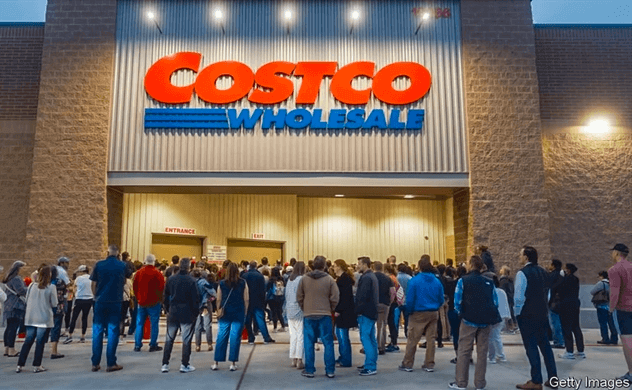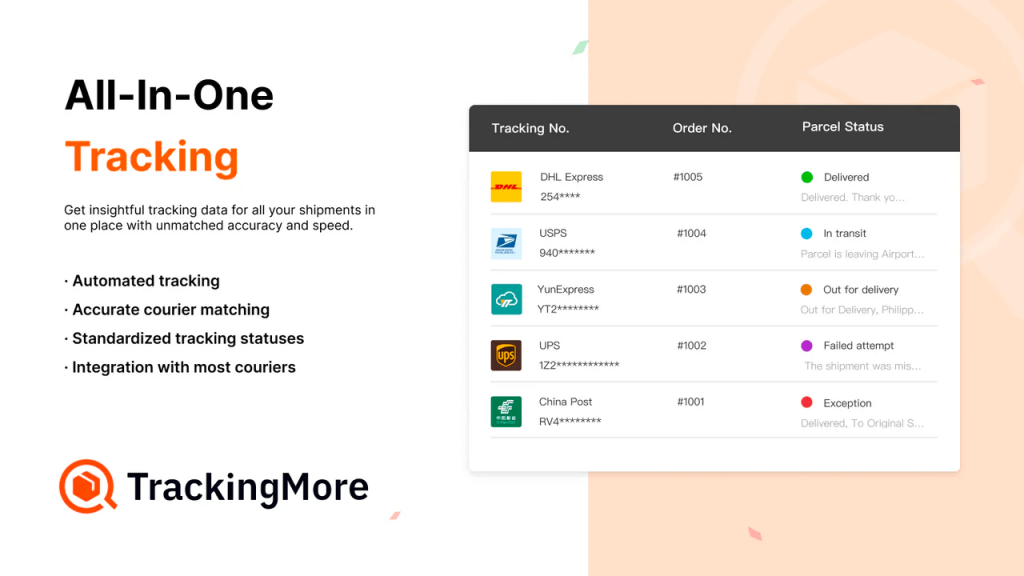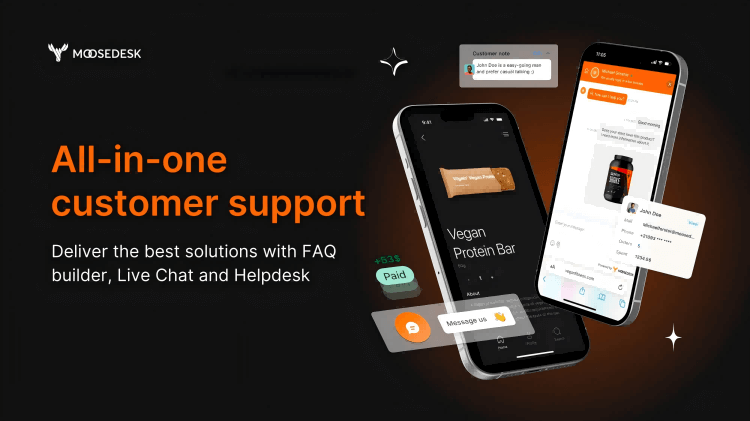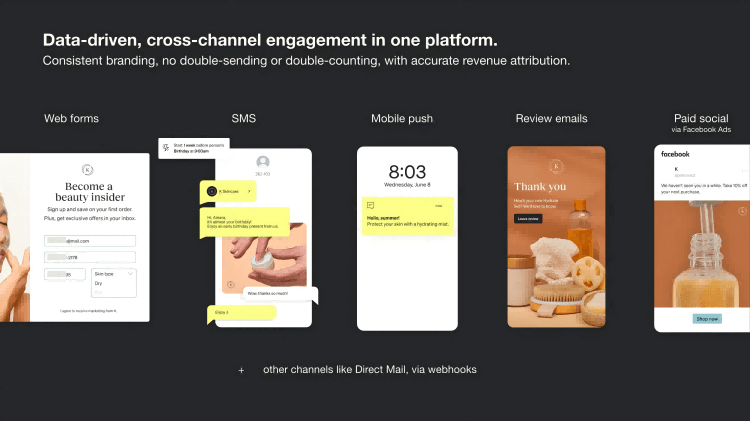While many companies nowadays put their focus on attracting new customers, the post-purchase stage often remains an untapped goldmine. This is a crucial stage in the customer journey that creates a long-lasting impact on the relationship between customers and the brand. A Statista survey conducted in May 2022 showed that 94% of respondents were willing to make repeat purchases from companies that provided positive customer service experiences.
Needless to say, post-purchase experience can open the door to customer loyalty and increase customer lifetime value. In this article, we’ll discover 6 practical tips on how to improve customer loyalty with post-purchase experience.
Post-purchase Experience: Definition and Examples
What is Post-Purchase Experience?
Put simply, post-purchase experience is what happens after you click buy on the website. It starts from the moment you complete an order and continues until your package is prepared, delivered, unpacked, and used.
Post-purchase experience can include logistic things like order confirmation, shipping information & other policies. However, what’s even more important is how to make your customers feel valued.
Do you offer helpful tips on using products? Do you check in to see if they are happy? By answering these questions, you can turn a one-time buyer into a loyal customer who keeps coming back and even tells their friends about you.
Why is Post-Purchase Experience Important?
There are 3 main reasons why the post-purchase experience deserves more attention and investment from business owners:
It boosts customer retention and loyalty
According to Bain & Company’s study, if customer retention increases by just 5%, the profit rise can reach up to 25%. In fact, the possibility of selling to an existing customer is 5 times higher than selling to a new prospect.
Why? Because once the customer is satisfied with their after-purchase care, they will be likely to come back next time. Therefore, don’t just limit your chances of closing a sale. It is time to also focus on delivering a post-purchase experience to your customers.
It reduces the churn rate
67% of customer churn is preventable if the customer issue is resolved. For that reason, businesses can engage with customers even after purchase to address potential issues before they escalate.
Besides, when providing useful instructions about product usage for your customers, it can ensure they get the most value from their purchase. Hence, this will reduce the likelihood of dissatisfaction or abandonment.
It fosters a positive brand reputation
When your customers are satisfied after the sale, their word-of-mouth recommendation can be incredibly useful. According to Nielsen, 92% of customers trust friends and family over other forms of advertising.
Moreover, customers who enjoy post-purchase service are more likely to share it with an average of 9 people. Thus, you are not only selling to individual customers but also potentially influencing their entire network. This can help amplify your brand’s reach and reputation.
Examples of Companies with Excellent Post-Purchase Experience
L.L.Bean

Famous for their exceptional customer service, L.L.Bean – a retail company selling outdoor clothing & equipment, was once famous for its lifetime guarantee for all products. This allowed customers to return products at any time for any reason. Even though they updated this policy in 2018 and changed it to a 365-day return policy instead, it is still generous compared to many other retailers.
Despite changing their return policy, L.L.Bean remains strongly committed to product quality. They will work closely with customers to resolve any issues even outside the official return window. For some certain products, there is a product repair service to extend their lifespan.
Costco

The household name wholesale corporation is known for its membership-based warehouse retail model and its customer-friendly policies, even after purchase. They provide a lifetime return policy, where most items can be returned at any time for a full refund.
However, this policy does not include electronics, diamonds, and specific products like cigarettes and alcohol.
As members of Cotsco, customers don’t need to prove receipts for order purchases. This is because Cotsco can look up their purchases using the member’s card in most cases. These receipt-free returns make it more convenient for customers, thus reducing friction in the return process. It can be considered a plus point in the post-purchase experience.
How to Boost Customer Loyalty through Post-Purchase Experience?
Whether you’re just starting or looking to level up your Shopify store, these 6 proven tactics will help you build long-lasting relationships with your customers and keep them coming back for more.
1. Real-Time Order Tracking
Order tracking describes the process by which customers get to know the progress of their purchases. It can start from when they click buy to when the package lands on their doorstep.
Order tracking is a powerful tool for building trust and reducing anxiety as it can cut down on “Where’s my order?” inquiries. More importantly, it gives customers a sense of control and transparency. These factors play a key role in boosting customer satisfaction and loyalty.
So, what are some approaches to help customers track their orders? You can consider using these strategies:
- Send proactive updates: Use email or SMS at key stages of the shipping process
- Support self-service package tracking: Build your own branded tracking page
- Use estimated delivery dates to set clear expectations
However, setting up all of them may seem difficult and time-consuming for online merchants. Meanwhile, order tracking tools like the TrackingMore Shopify App can make the process smooth and straightforward.

This app integrates with over 1,300 carriers worldwide, so your customers can track their orders no matter which carriers you use. It sends automated email notifications to keep customers updated on shipment status and has fully customizable tracking pages to match your brand. Plus it has an Estimated Delivery Date (EDD) plugin which shows delivery estimates on the product page, shopping cart, and tracking page to improve pre-purchase and post-purchase experience. This seamless integration will reduce customer support inquiries.
2. Proactive Omnichannel Customer Support
For the majority of online businesses, customer support usually happens during the sale journey to encourage the visitors to purchase. But it doesn’t end at the point of sale. Businesses should also be there for customers across all channels after their orders have been completed.
In the critical post-purchase phase, having proactive omnichannel customer support can significantly enhance your customers’ overall experience. Omnichannel support means providing a seamless and consistent service whether a customer reaches out via email, live chat, social media, or phone.
By doing this, there is a better chance of higher satisfaction rates and stronger customer loyalty. Companies with strong omnichannel customer support retain on average 89% of their customers. This is almost 3 times higher than companies without omnichannel engagement.
Here are some proven tactics to foster your customer service via multi-channels:
- Provide easy access to product guides, FAQs, and tutorials
- Offer multiple contact options
- Send personalized follow-ups after purchase
- Use data to anticipate common issues
However, setting up self-help materials like FAQs or managing many channels at the same time can be highly challenging. This is when helpdesk software comes in handy and helps online merchants to streamline their processes.
MooseDesk, an all-in-one live chat, FAQ builder, and helpdesk solution on Shopify can satisfy all picky business owners regarding customer service.

Not only does it allow merchants to manage emails, live chats, and inquiries via WhatsApp in one single view, but it also provides stunning pre-built FAQ templates. Besides, this app can help you analyze customer and response statistics to take away key insights and improve your post-purchase support strategy.
3. Hire Dedicated Customer Service Executives
Having a dedicated team of customer service executives is crucial to ensuring your omnichannel support is timely and effective. These professionals should be trained to handle inquiries across all platforms, offering consistent responses while being knowledgeable about your products and policies.
By hiring specialized customer executives, you can further personalize the experience, provide quicker resolutions, and elevate overall customer satisfaction.
If your business is running in the USA and you’re hoping to recruit dedicated customer service executives from an overseas market like India for cost savings and better talent, platforms like Remote can help.
They allow you to hire globally while easily navigating the complexities of international employment and compliance. This means you can tap into a wider talent pool without worrying about the administrative challenges of hiring outside your home country.
4. Simplify Exchange & Returns
A user-friendly exchange and returns process is crucial for enhancing the post-purchase experience. When customers know they can easily return or exchange items, it reduces purchase anxiety and boosts confidence in your brand. In fact, 96% of consumers say they would shop with a retailer again based on an easy return experience
To simplify your process, you should provide prepaid returns labels and offer clear, easy-to-find returns policies. If possible, business owners can also allow in-store returns for online purchases. Offering instant refunds or exchanges is another great way.
A good example of a tool that makes simplified exchange easier is Parcel Panel. This app can integrate with your e-commerce system to automate the entire process. It can streamline your returns and exchanges management and deliver a hassle-free experience for your customers to minimize losses and retain revenue.

5. Launch a post-purchase email marketing campaign
Post-purchase email marketing campaigns are a powerful tool to enhance customer experience, drive loyalty, and boost repeat sales. This approach keeps your brand top-of-mind and provides value long after the initial purchase.
Some examples of post-purchase emails include order confirmation, shipping updates, product tips, review requests, etc. Customers who receive post-purchase emails are 73% more likely to make a repeat purchase, according to Retention Science.
Consider using a tool like Klaviyo, a platform specializing in e-commerce email marketing. It offers automated post-purchase email flows for the custom needs of merchants. This software also provides advanced segmentation based on purchase history and behavior.

With Klaviyo, you can create targeted campaigns that guide customers through the post-purchase journey, from order confirmation to product usage tips.
6. Offer Referral & Loyalty Program
Loyal customers are 5 times more likely to repurchase and 4 times more likely to refer. It is every merchant’s dream to turn each customer into the biggest and most loyal fan of their brand. The most ideal time to turn this into reality is after every order purchase.
A loyalty program usually includes a points system and exclusive perks for customers. These rewards make them feel like they’re winning at life, boosting the post-purchase experience.
One powerful tool to manage referral and loyalty programs is Smile.io, the #1 Loyalty program solution on Shopify.

This is an all-in-one loyalty and rewards platform designed specifically for e-commerce businesses. The app offers customizable loyalty programs with points systems, VIP tiers, and referral programs.
All of these are customizable to cater to every need of different businesses. Moreover, your customers can earn and redeem points across multiple channels, including in-store and online.
7. Create Brand Community
Building a community around your brand is a powerful strategy to enhance the post-purchase experience and foster long-term customer relationships. Communities create emotional connections. Furthermore, communities can provide direct feedback for product improvements. 55% of consumers are interested in being involved in product development.
To create communities for your brand, start by choosing the right platform first. It doesn’t have to be every platform, you just need to focus on the most relevant one where most of your customers stay online and active.
The next step is to develop a content strategy with regular posts. The strategy can include a mix of informational, educational, or entertaining content surrounding your brand. Don’t forget to encourage user-generated content and foster interaction with discussion, polls, or surveys.
The key to a successful community is genuine and active engagement, while also providing value to your members.
Final Thought
To conclude, sales are just the beginning of the customer relationship. Investing in the post-purchase experience shows customers that their satisfaction remains a priority long after they’ve made a purchase.
Don’t forget to use these suggested software to create a cohesive and satisfying post-purchase experience!
The TrackingMore team shares insights on logistics tracking technology, industry trends, and e-commerce logistics solutions to help businesses streamline shipment tracking and enhance customer post-purchase experience.